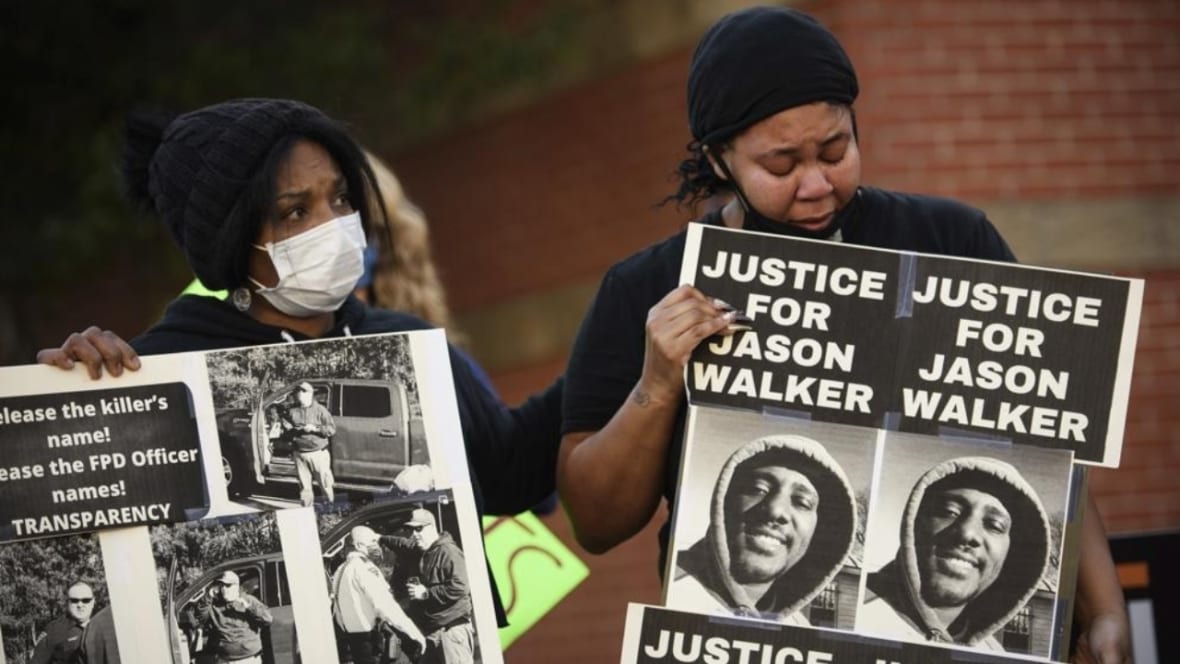Study: Black men killed more often by off-duty police than any other group
Out of 242 times between 2013 and 2021 in which police killed people while not on duty, approximately 40% of the victims were Black men, according to researchers at Yale.
Off-duty police officers kill Black men in the United States at higher rates than they do their white and Hispanic counterparts.
In a study published June 5 in the journal Health Services Research, Yale researchers noted that out of 242 occurrences between 2013 and 2021 in which police killed people while not on duty, approximately 40% of the victims were Black men, according to YaleNews. The second and third-most frequent victims were white men at 25.2%, then Hispanic men at 11.2%.
The U.S. Census Bureau reported just 6.3% of Americans identified as Black men in 2021. The Yale study indicated that Black men comprised 39.3% of those slain by off-duty police officers.

Nearly all victims were shot, and less than half allegedly possessed weapons during their murders.
The Yale study — using data from the Mapping Police Violence database and news articles from Media Cloud — also found that off-duty officers frequently escalated situations deemed confrontational, that many deadly happenstances took place while they were working second jobs as security officers, and officers often hid information regarding their complicity in cases that turned lethal.
In addition, researchers discovered that news media sources were three times more likely to mention these violent episodes when victims were Black or Hispanic than when victims were white. They urged outlets to cover all murders committed by off-duty police officers, regardless of the victim’s race and to talk with various sources rather than relying solely on police assertions.
Emmanuella Asabor, the study’s principal author and an M.D.-Ph.D. student at Yale, noted that while a growing body of research is assessing many facets of policing, the behaviors of off-duty police officers remain understudied.
“Due to the weapons allowances for off-duty police officers and that off-duty and even veteran police officers are imbued with a great degree of power to intervene,” Asabor said, “we felt that off-duty policing was worthy of investigation.”
Separating this data by the racial and ethnic origin of victims, the researchers also assessed whether information about violence committed by off-duty police officers was consistent with data regarding violence committed by police officers while on duty.
The study found that Black women were more likely than any other racial or ethnic group to have been killed by off-duty police — 12.8% vs. 87.2% killed by on-duty officers. In contrast, only 1.5% of white men were killed by off-duty cops, as opposed to 98.5% of those on duty.
“That says to us that the rate of off-duty police perpetrated killings of Black women diverges from broad public discourse on policing,” Asabor said, “which tends to under-estimate the overrepresentation of Black women among policing victims.”
Numerous other patterns emerged from a qualitative review of the episodes. Researchers discovered that cops regularly killed friends, family members or other officers inside their social networks.
During these violent incidents, sources claim police were frequently inebriated or mentally ill. Reports also noted a lack of transparency in several of these incidents, with police concealing or suppressing information regarding their participation.
The findings led the researchers to suggest several regulations, such as a rule requiring cops to put their service guns away after their shifts are over and a definition of when off-duty officers should step in. The results also indicate the need for more specific legislation and a better analysis of off-duty officers’ actions.
“There needs to be clear, widespread guidance,” said Asabor, YaleNews reported, “preferably at the federal level, on what types of situations call for off-duty officer intervention and how we can document those interventions after they happen.”
TheGrio is FREE on your TV via Apple TV, Amazon Fire, Roku and Android TV. Also, please download theGrio mobile apps today!


